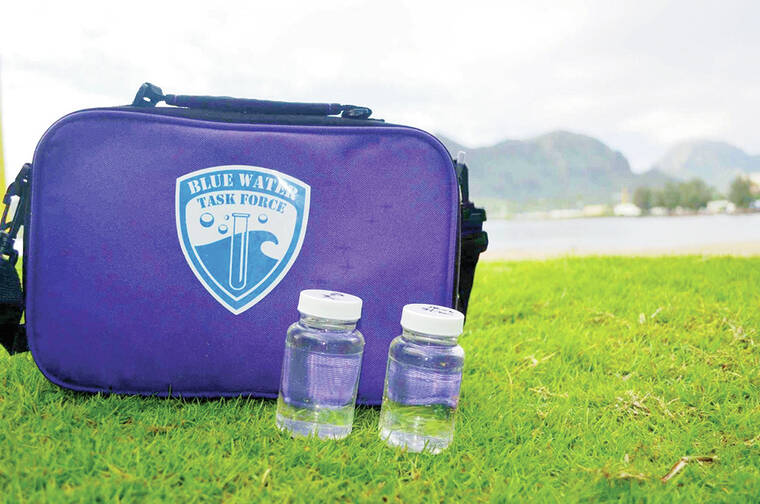LIHU‘E — The Surfrider Foundation’s Kaua‘i chapter has resumed monthly testing of rivers, streams and surf breaks after a lengthy hiatus prompted by the coronavirus pandemic.
Twelve volunteer members of the nonprofit’s Blue Water Task Force sampled 18 locations across the island earlier this month.
“The goal of Surfrider’s Blue Water Task Force is to provide the community assurance that the waters that they and their families play in are safe from pollution,” Surfrider Senior Scientist Carl Berg told The Garden Island. “We’re all geared up to continue to keep going, and we look forward to the community’s response.”
Surfrider uses a federal Environmental Protection Agency-approved method to measure the concentration of fecal-indicating bacteria in the genus ITAL Enterococcus within each water sample.
Enterococci bacteria live in the intestinal tracts of warm-blooded animals, including humans, cattle, pigs, dogs, cats, rats and birds.
There should be less than 130 Enterococci bacteria per 100 milliliters of sample water, per federal and state standards, to be considered clean, according to Berg.
“That’s a statistical threshold value. They’re
using statistics here, looking at huge data sets,” he explained. “If a single sample is above 130, then there is a high probability of somebody getting sick.”
A statistical threshold value of 130 would result in an estimated illness rate of 36 per 1,000 primary-contact recreators, according to the EPA’s Recreational Water Quality Criteria.
None of the sites sampled by the Blue Water Task Force this month are tested by the state Department of Health, which only samples water at certain beaches.
“It’s a completely different set of data. We’re not competing with them,” Berg said. “What we’re doing is saying, ‘Hey, the Department of Health samples these places and Surfrider samples these places.’”
Three of the Feb. 12 sites – namely, Moloa‘a, Hanama‘ulu and Nawiliwili streams — returned high concentrations of Enterococci.
“These streams are chronically polluted, and Surfrider believes that they should be posted by the Department of Health with warning signs,” a press release from the nonprofit reads.
Findings in years past have prompted DOH warning signs at Gillins Beach, Waiopili Stream and Niamalu Beach Park, among other locations, Berg said.
Surfrider claims cesspool leakage into the groundwater is a likely cause of some of the streams’ contamination.
The cesspool connection can be made through past Surfrider water tests, which identified quantities of the artificial sweetener and sugar substitute sucralose in 20 streams and four rivers.
“Sucralose only comes from human feces,” Berg said.
Surfrider’s press release also claimed other possibilities, include pig farms using processed human foods as feed, or recycled golf course water.
The selection of the Feb. 12 sampling sites was informed by residents’ input.
“If the community has some places that they would really like us to sample, go to our website, send us an email and we’ll see what we can do,” Berg said.
DOH water-quality data can be found online at health.hawaii.gov/cwb/, under the “Water Quality” heading.
Surfrider water quality data can be found online at kauai.surfrider.org/blue-water-task-force/.
•••
Scott Yunker, reporter, can be reached at 245-0437 or syunker@thegardenisland.com.






